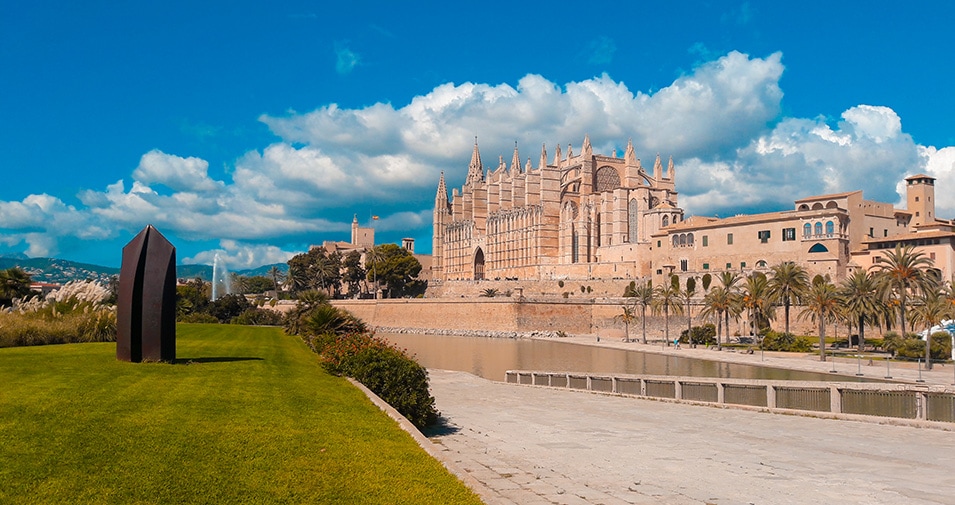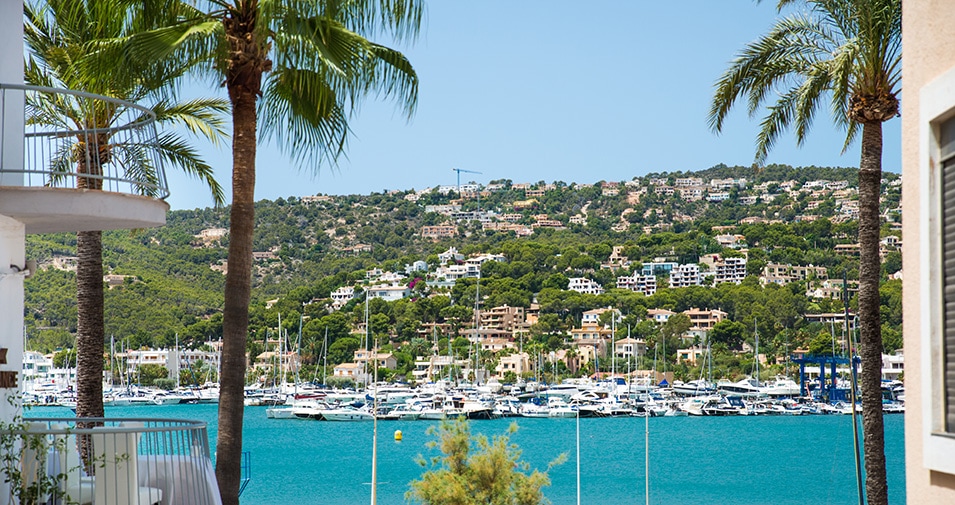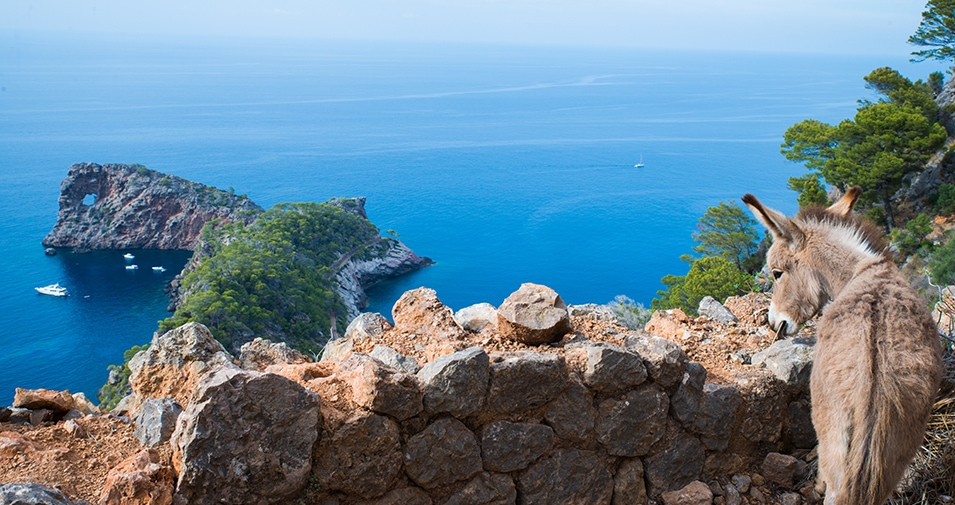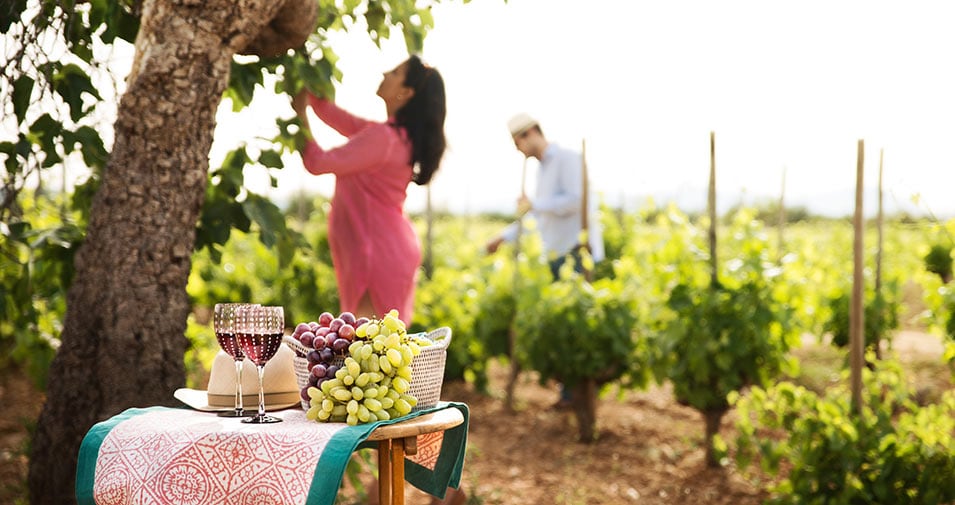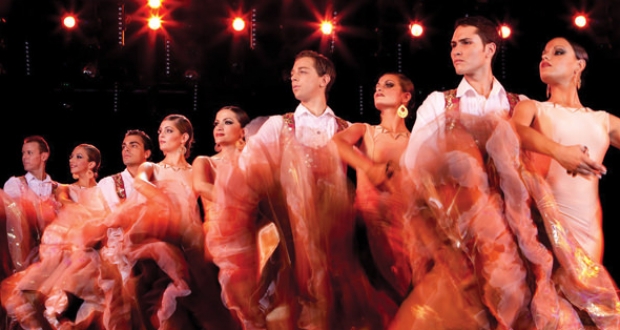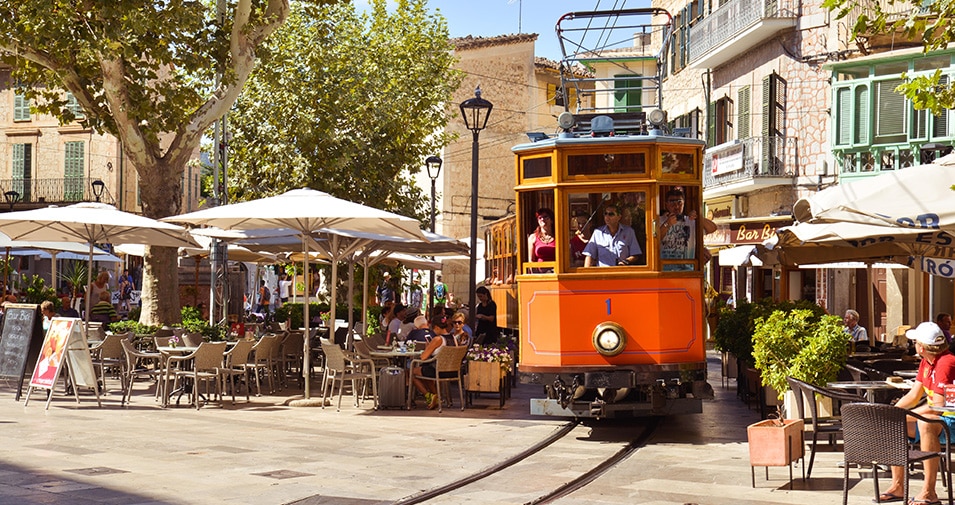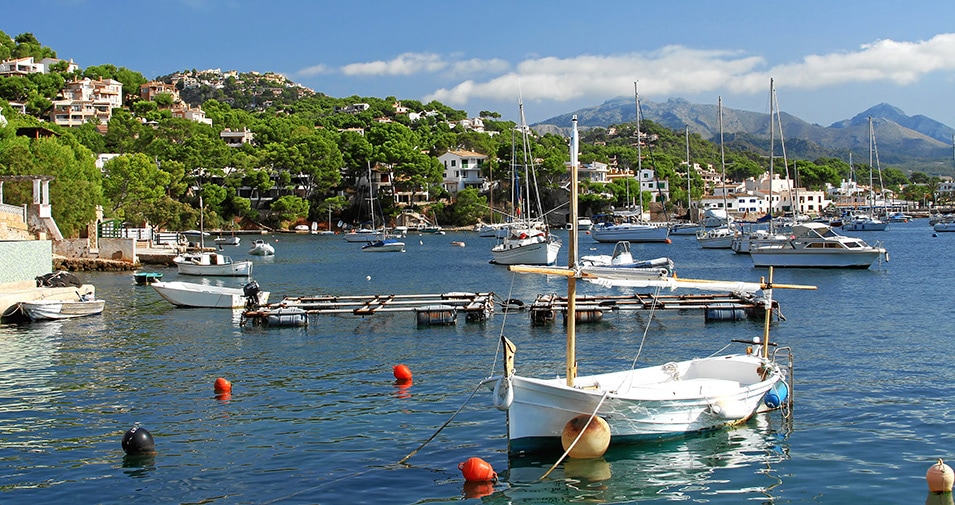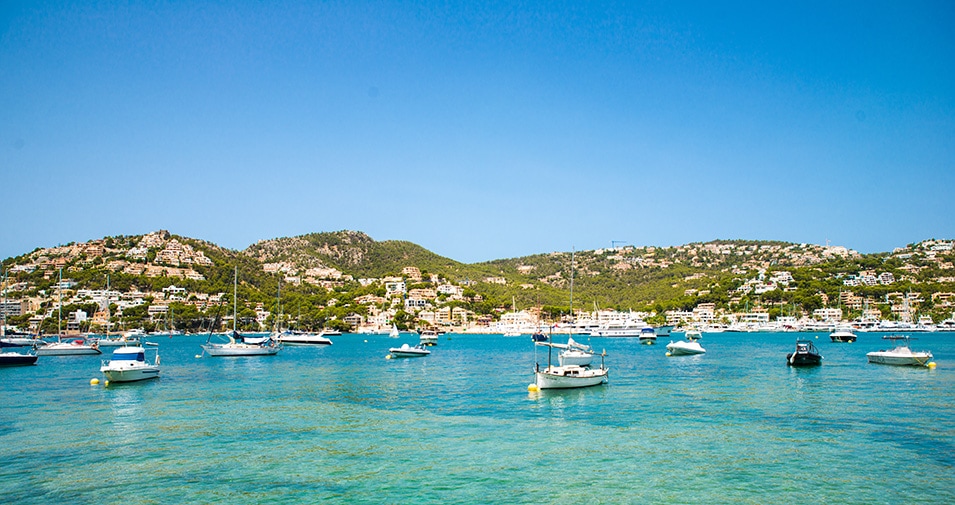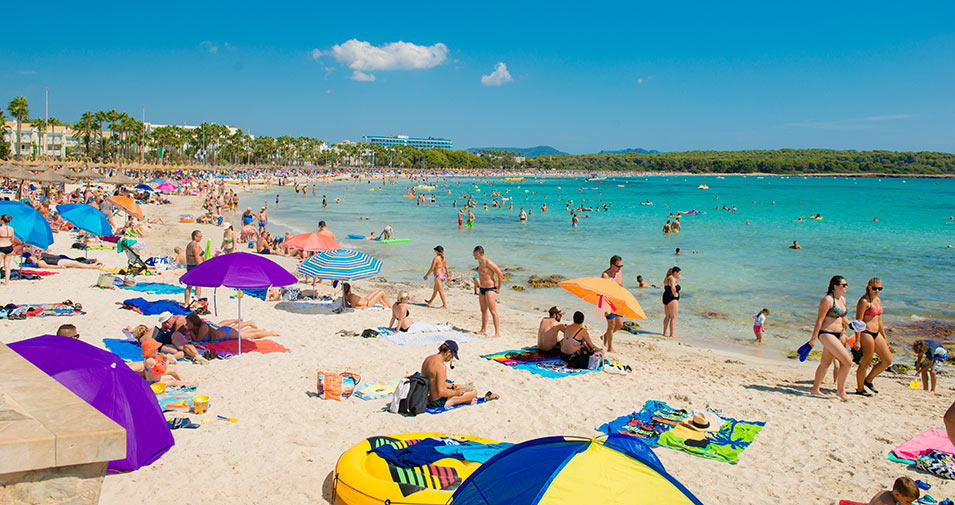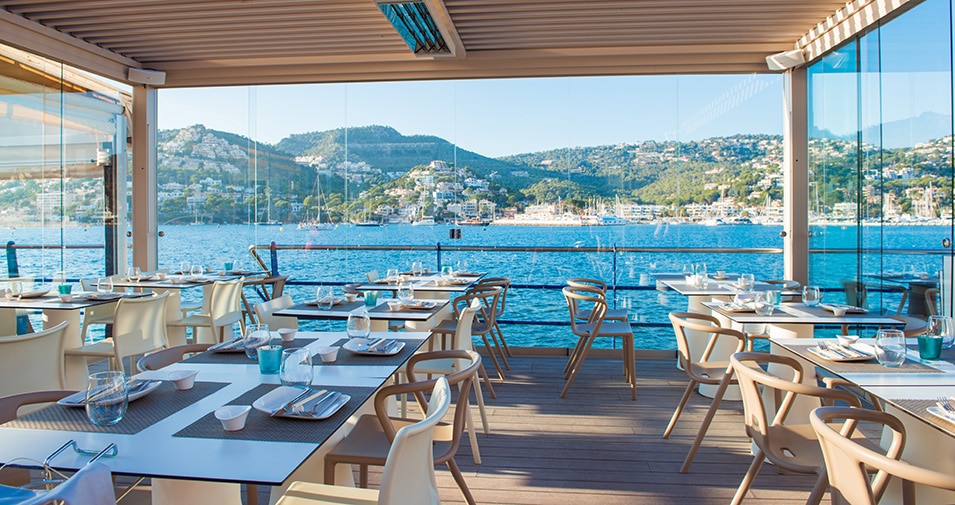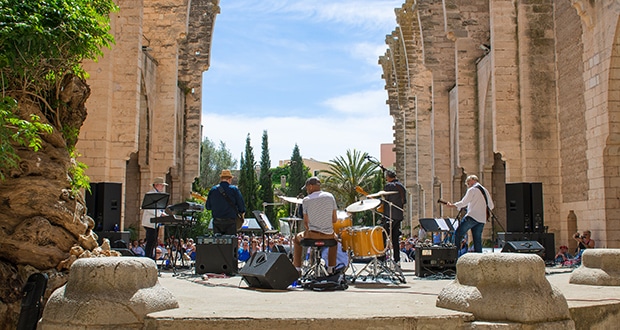Mallorca Facts
Mallorca Facts
Island official name: Mallorca or Majorca
There are few places in the world that can offer travellers such a remarkable combination of stunning landscapes, pristine beaches, captivating cultural heritage and unique experiences within such a compact location as Mallorca – or Majorca – depending on where you are from.
Mallorca is the largest of the Balearic Islands, and one of the most popular and beloved destinations in the Mediterranean – with good reason.
The Balearic Islands are an autonomous region of Spain, consisting of the islands of Mallorca, Menorca, Ibiza and Formentera. The two official languages are Catalan and Spanish and in Mallorca, a local dialect of Catalan, the Mallorquín (mallorquí) is spoken. In addition, there is a lot of English and German spoken across Mallorca, making communication very easy.
The island offers 300 days of sunshine and a diverse landscape that is ideal for outdoor activities including golf, cycling, hiking, sailing, and of course a host of beaches for swimming and sunbathing.
Capital: The capital of Mallorca is Palma, a vibrant city that is active and dynamic all-year long, with galleries and museums, as well as a beautiful old town filled with luxury boutique hotels, excellent shopping and a big variety of great restaurants. Palma is a popular place to live (voted the best place to live in the world by the Sunday Times) but expect to pay high prices, as demand exceeds supply.
In recent years, Mallorca has become known as the gourmet capital of the Mediterranean, with a number of Michelin starred restaurants as well as innovative young chefs focusing on locally sourced ingredients and traditions. What’s more, Mallorcan wine is booming, with independent winemakers turning out first rate wines that are gaining in recognition.
Government Type: Autonomous community (created in accordance with the Spanish constitution of 1978, with the aim of guaranteeing limited autonomy of the nationalities and regions that make up Spain).
Location: In the Mediterranean sea. One of the Balearic Islands
Latitude 39° 34’ 09” North, Longitude 2° 39’ 00”, East Elevation above sea level: 34 m = 111ft. From the mainland of Spain: Approximately 130 miles south of Barcelona and 150 miles east of Valencia
Dimensions: 100km North to South, 70km East to West
Coastline: 555km
Sea water quality: The quality of the sea water is mostly very good around the island of Mallorca and a lot of beaches can be compared with the Caribbean – turquoise waters with fine white sandy beaches.
|
Water Temperature |
||
|
Month |
ºC |
ºF |
|
January |
14.4 |
57.9 |
|
February |
13.9 |
57 |
|
March |
14.1 |
57.4 |
|
April |
15 |
60.6 |
|
May |
18.9 |
66 |
|
June |
22.5 |
72.5 |
|
July |
24.8 |
76.6 |
|
August |
26 |
78.8 |
|
September |
25.1 |
77.2 |
|
October |
22.7 |
72.9 |
|
November |
19.7 |
67.5 |
|
December |
16.3 |
61.3 |
Area: 3,640.11 km2 (1,405.45 sq miles)
Currency (code): EURO €
Mallorcan's celebrate:
– 1 March (in commemoration of the signing of the Statute of Autonomy on the 1st March 1983).
– September 12th is Mallorca Day when the island and the wider Balearic Islands celebrate the arrival of Catalan troops in 1229.
Administrative Capital: Palma de Mallorca
Commercial Capital: Palma de Mallorca – Population (404,681)
Largest cities: Palma, Manacor, Inca
Distances:
Palma – Alcúdia: 54 km
Palma – Sóller: 33 km
Palma – Cala Millor: 71 km
Palma – Magaluf: 15 km
Palma – Cala D’Or: 62 km
Climate: The climate of Mallorca is Mediterranean, with annual average temperatures of 19º C and precipitation of 410mm. The coldest month is usually January, with 15ºC and the warmest August, with 31ºC. There are on average 51 days of rain during the year. The wind comes mainly from the north. In some places a slight sea wind can blow, bringing some welcome relief on the hottest of days.
Weather Mallorca: Your daily weather update for Mallorca. The weather in Mallorca is understandably a strong attraction for many visitors to the island!
Terrain: The coast is mainly rocky, pocketed with small coves, sandy beaches and caves. Four large bays provide shelter from the open seas – Palma Bay, Alcúdia Bay, Pollensa Bay and Port de Sóller. The interior of the island is covered with lush pine forest, olives and almond trees, and in the central plains there is mainly agricultural terrain and vineyards.
Highest Mountain: Serra de Tramuntana, Puig Major 1,445 m (4,741 ft)
National Flower: The flower of the Almond tree (Prunus Dulcis).
National Parks and Nature Reserves Area: Including all 7 Parks and Reserves – 662.2316sq.km
Island population: 859,289 (2015)
Population Growth Rate: 1.36% (Balearic Islands in 2017)
Population Density: 240.45 people per sq km (622.76 /sq mile)
Life Expectancy at Birth: 85 female, 80 male
Languages: Catalan co-official with Castellano the official language in Spain. In many towns you will hear locals speaking Mallorquí which is a dialect of Catalan. Note: English & German are widely spoken in tourist areas and there is also a well developed infrastructure for foreigners buying property on Mallorca.
Religion: Catholic 83%, Muslim 10,3%, Protestant 4.9%, Jews 1,1%.
Time Zone: Mallorcan Time is one hour ahead of GMT.
International Dialing: +34
Electricity:
Voltage: 230 V
Frequency: 50 Hz
Plugs: Type F
Labour Force:
Agriculture & Fishing – 0,65%
Industry – 2,20%
Construction – 5,86%
Services – 91,27 (according to the contract signed in the month of July)
Agriculture & Products: Woodland areas (almond trees, olive trees and carob trees) and fruit, followed by cereal and vegetable crops which are above all to be found in the “Pla de Mallorca” (centre of the island). Most important are the olive groves, the citrus fruit orchards in the Sóller valley, the potato and vegetable crops in Sa Pobla.
Gross Domestic Product (GDP):
Annual GDP 2017 28,970M €
Growth Rate 2,7%
Exports % GDP 2017 6.20%
Imports % GDP 2017 5.94%
Flag Description: The flag is the Aragonese – Catalan Flag – nine horizontal stripes yellow and red – with, along the hoist, a white castle rotated 90º counterclockwise on a purple field. On the central tower, an angel in black, haloed and holding a stick topped by a cross. The castle represents the Royal Palace of La Almudaina, the official residence of the Kings of Majorca, located in Palma de Mallorca, the capital of the Balearic Islands.
© Content courtesy of abcMallorca
